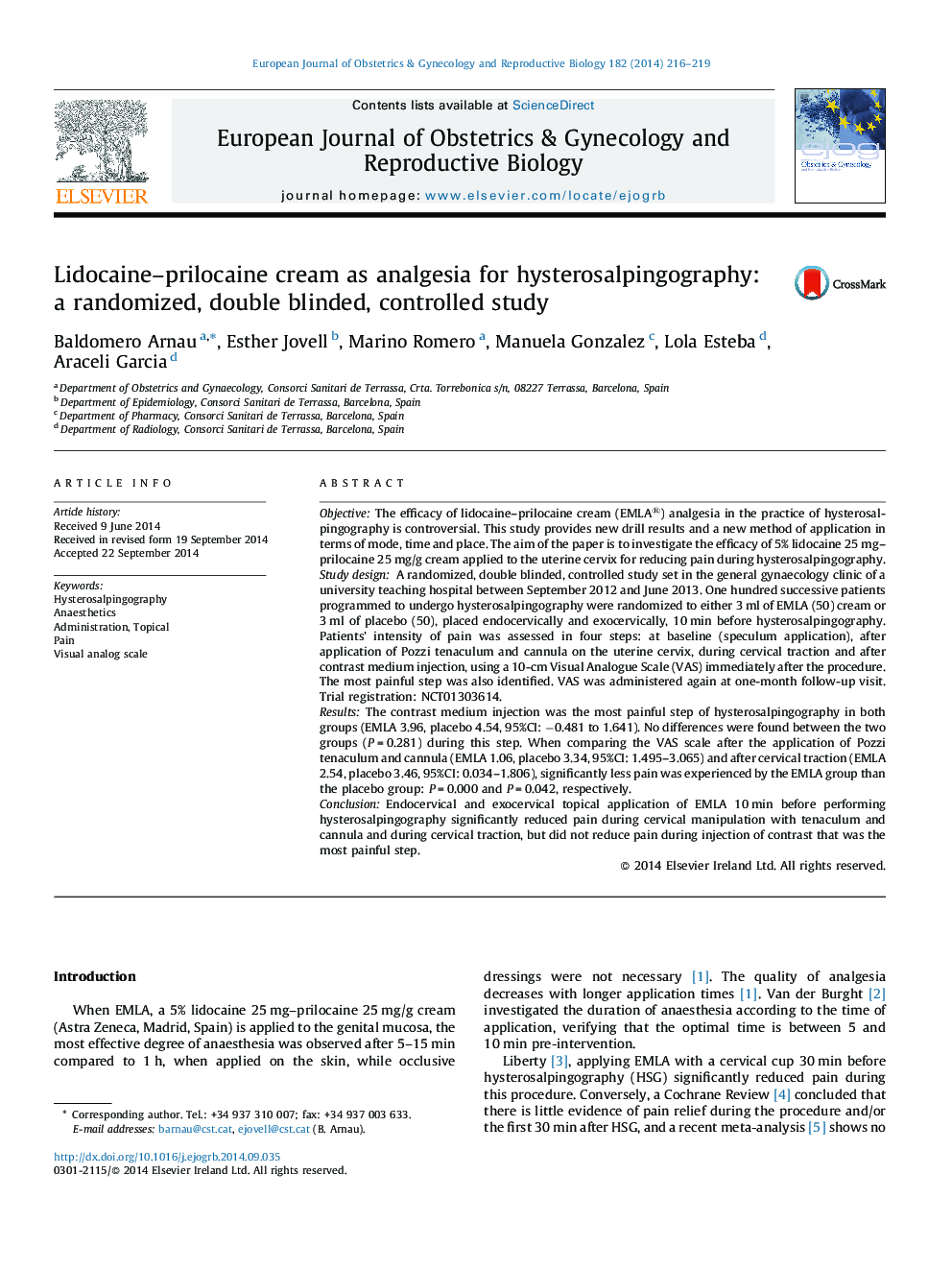| کد مقاله | کد نشریه | سال انتشار | مقاله انگلیسی | نسخه تمام متن |
|---|---|---|---|---|
| 6173407 | 1599799 | 2014 | 4 صفحه PDF | دانلود رایگان |
ObjectiveThe efficacy of lidocaine-prilocaine cream (EMLA®) analgesia in the practice of hysterosalpingography is controversial. This study provides new drill results and a new method of application in terms of mode, time and place. The aim of the paper is to investigate the efficacy of 5% lidocaine 25Â mg-prilocaine 25Â mg/g cream applied to the uterine cervix for reducing pain during hysterosalpingography.Study designA randomized, double blinded, controlled study set in the general gynaecology clinic of a university teaching hospital between September 2012 and June 2013. One hundred successive patients programmed to undergo hysterosalpingography were randomized to either 3Â ml of EMLA (50) cream or 3Â ml of placebo (50), placed endocervically and exocervically, 10Â min before hysterosalpingography. Patients' intensity of pain was assessed in four steps: at baseline (speculum application), after application of Pozzi tenaculum and cannula on the uterine cervix, during cervical traction and after contrast medium injection, using a 10-cm Visual Analogue Scale (VAS) immediately after the procedure. The most painful step was also identified. VAS was administered again at one-month follow-up visit. Trial registration: NCT01303614.ResultsThe contrast medium injection was the most painful step of hysterosalpingography in both groups (EMLA 3.96, placebo 4.54, 95%CI: â0.481 to 1.641). No differences were found between the two groups (PÂ =Â 0.281) during this step. When comparing the VAS scale after the application of Pozzi tenaculum and cannula (EMLA 1.06, placebo 3.34, 95%CI: 1.495-3.065) and after cervical traction (EMLA 2.54, placebo 3.46, 95%CI: 0.034-1.806), significantly less pain was experienced by the EMLA group than the placebo group: PÂ =Â 0.000 and PÂ =Â 0.042, respectively.ConclusionEndocervical and exocervical topical application of EMLA 10Â min before performing hysterosalpingography significantly reduced pain during cervical manipulation with tenaculum and cannula and during cervical traction, but did not reduce pain during injection of contrast that was the most painful step.
Journal: European Journal of Obstetrics & Gynecology and Reproductive Biology - Volume 182, November 2014, Pages 216-219
